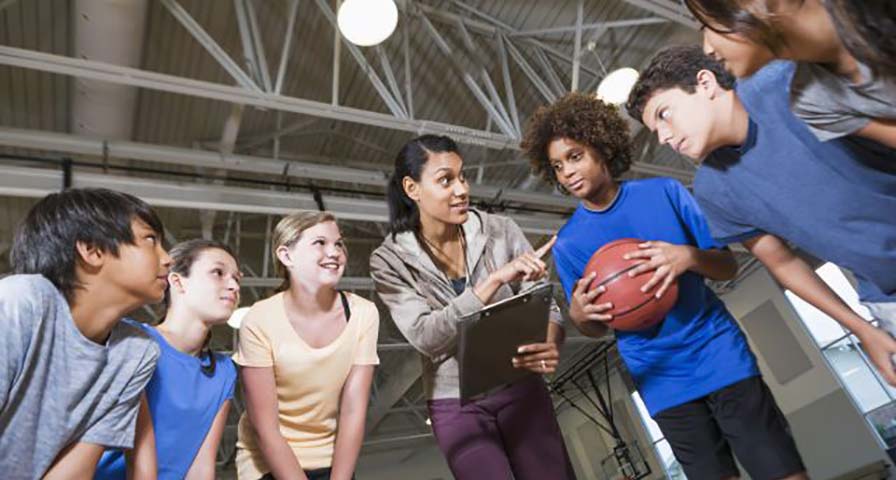Originally published Sept. 30, 2018 in Alabama Newscenter.
By Alicia Rohan
Quality physical education is the cornerstone for schools invested in teaching the whole child. Physical education is the time during a school day to develop motor skills as well as address fitness and social development. The University of Alabama at Birmingham School of Education equips future educators with the skills needed to develop inclusive physical activities to support the development of physical education curriculums for students.
 “All activities and games in physical education classes should be designed to meet three main goals: motor development, fitness development and social development,” said Sandra Sims, Ph.D., associate professor in the UAB Department of Human Studies. “To do this, teachers need to focus on three areas: modification, inclusion and safety.”
“All activities and games in physical education classes should be designed to meet three main goals: motor development, fitness development and social development,” said Sandra Sims, Ph.D., associate professor in the UAB Department of Human Studies. “To do this, teachers need to focus on three areas: modification, inclusion and safety.”
Modification
Teachers should design games that increase the opportunities needed for motor development, fitness development and social development.
“Maximum participation of all students is critical,” Sims said. “For example, instead of playing one large kickball game where students may touch a ball only once, the teacher should organize the class to play several games at the same time.”
Making one modification of team size as suggested by Sims allows more opportunities for students to practice motor skills, to be engaged in physical activity and to practice social skills with others in the class.
Another example provided by Sims is to modify the rules of the game. Instead of playing a volleyball game with a regulation height net, the teacher can lower the net and play multiple “two versus two” volleyball games. This allows for more students to participate with others of the same level skill set.
“The modification of rules increases the opportunities for students to meet the physical education goals and to create enjoyment of the games for the students,” Sims said.
Inclusion
All students should be included in activities for the entire physical education class time. Games that eliminate students from playing are not appropriate for physical education classes.
A popular elimination game is knock out, where two students shoot a basketball at the same goal and try to be the first to ring the goal. After students are “knocked out” of the game, they sit and wait for the game to end.
“Instead of having students sit out, the teacher can plan the activity to include stations or areas where students can move to a new game to play or practice skills used in the game instead of sitting and watching others play,” Sims said. “Students who are not athletically inclined or who have disabilities are often at a disadvantage during elimination games.”
Physical education games should be designed to be inclusive so that all students have the opportunity to meet the three main goals of motor development, fitness development and social development.
Safety
All students deserve a safe environment. This includes both physical and emotional safety.
“Games that target hitting other students create unnecessary safety risks,” Sims said. “Games that cause students to feel inferior, humiliated and isolated have no place in physical education classes. It is important that we create a safe and inclusive environment by providing opportunities for each student to learn and succeed, no matter their skill level.”
The physical education teacher is responsible for the safety of all students and for providing an environment where all students can thrive and have the opportunity to improve skills in motor, fitness and social development.
Seeking IHT Spirit System information?




